Picking the ideal rewards credit card is a highly personal choice. If your goal is to explore the world, a premium travel card can turn your dreams into reality by allowing you to transfer rewards to airline and hotel partners. On the other hand, if you want to maximize rewards on everyday purchases like pet food and furniture, a cash-back card with customizable categories may be more suitable.
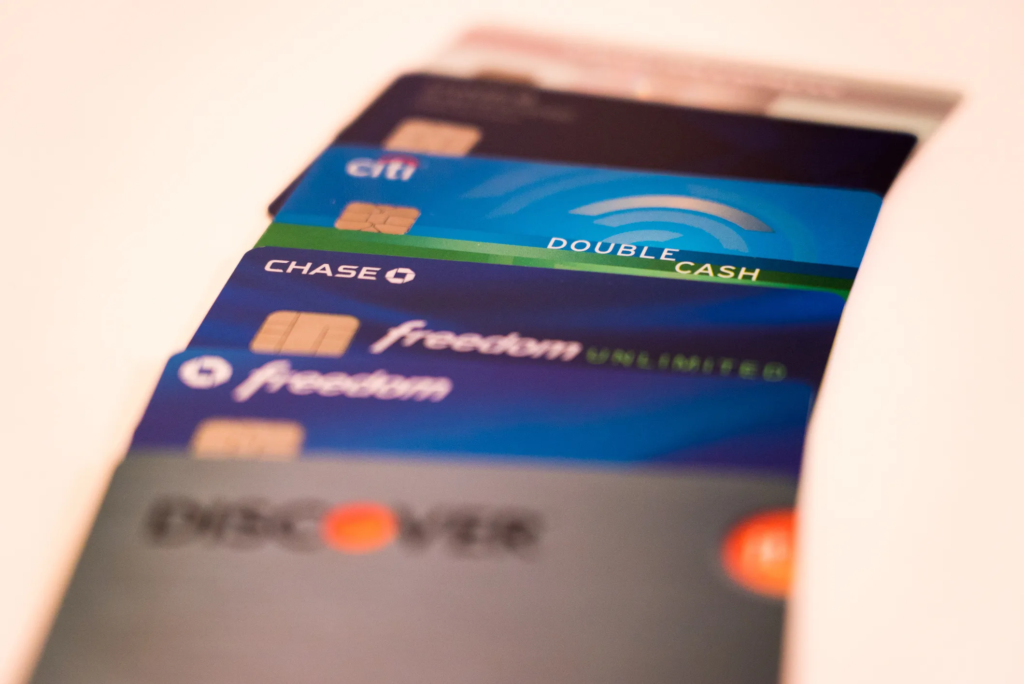
There are several factors that set apart a rewards credit card from the rest. These include higher earning rates in specific categories, unique earning categories not commonly found on other cards, and flexible redemption options. Some cards come with an annual fee, while others do not. Determining whether the fee is worthwhile depends on how much you spend in the card’s rewards categories.
To curate a list of the very best credit cards in this category, we thoroughly examined numerous options from different issuers. Our selections are as follows:
Chase Freedom Flex℠
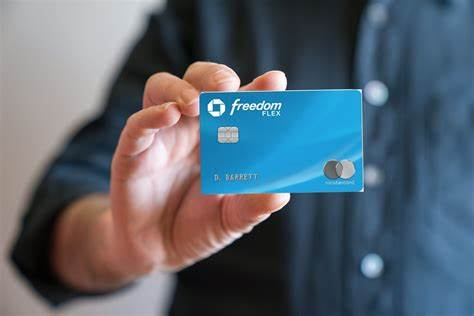
The Freedom Flex card offers generous cash-back potential, but maximizing its rotating quarterly categories requires some effort. With no annual fee, it’s a hard-to-beat option. You can earn 5% cash back on up to $1,500 in rotating categories (activation required), 5% cash back on travel through Chase Ultimate Rewards®, 3% cash back on dining and drugstores, and 1% cash back on all other purchases.
When you open an account, you can earn a $200 bonus by spending $500 on purchases within the first three months. However, keep in mind that there’s a 3% foreign transaction fee on each transaction made in U.S. dollars.
While the Flex card is marketed as a cash-back card, it actually earns points, with each point worth 1 cent in cash back. You can combine points earned on this card with points from a premium Ultimate Rewards credit card, allowing you to redeem them for travel bookings and potentially increase their value.
Additionally, the Flex card offers a low introductory APR period for both purchases and balance transfers. Remember to activate the rotating categories each quarter to earn the elevated cash back on purchases within those categories.
Bilt World Elite Mastercard
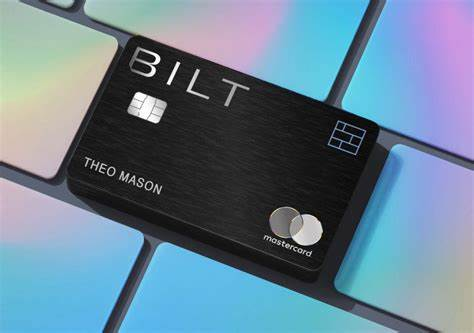
Paying rent with a credit card usually incurs a transaction fee. However, imagine being able to pay rent by credit card without that fee while earning rewards. The Bilt World Elite Mastercard® offers this benefit and more. By using this card, you not only avoid fees but also gain access to a fantastic selection of airline and hotel transfer partners. It’s a perfect choice for renters who want to accumulate points for redeeming award travel.
The annual fee for the Bilt World Elite Mastercard® is $0. When it comes to rewards, you earn 1 point per $1 spent on rent payments without a transaction fee, up to a limit of 100,000 points each year. Additionally, you receive 2 points per $1 spent on travel when booking through the Bilt Travel Portal or directly with airlines, hotels, car rentals, or cruise companies. For dining expenses, you earn 3 points per $1, and for other purchases, you earn 1 point per $1. To qualify for these rewards, you must make at least five transactions per billing period.
There is no welcome bonus or foreign currency conversion fee associated with the Bilt World Elite Mastercard®. One notable benefit is that points can be transferred to popular airline and hotel partners on a 1:1 basis. However, keep in mind that you need to make at least five transactions per billing period to earn rewards.
Chase Sapphire Reserve
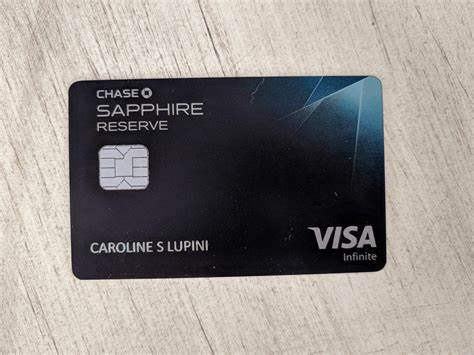
The Chase Sapphire Reserve® is known as a top-tier travel credit card, offering exceptional benefits. It does have a high annual fee of $550, along with an additional $75 per authorized user. However, it provides an annual travel credit of up to $300, access to a prestigious list of travel partners for point transfers, and a membership to Priority Pass Select airport lounges (enrollment required).
When it comes to rewards, the card offers 5 points per $1 spent on flights and 10 points per $1 spent on hotels and car rentals through Chase Ultimate Rewards® after the first $300 spent on travel purchases each year. Additionally, you can earn 3 points per $1 on other travel and dining expenses, as well as 1 point per $1 on all other purchases.
For new cardholders, there is a welcome bonus of 60,000 points available. To qualify, you must spend $4,000 on purchases within the first three months of opening the account.
One advantage of the Chase Sapphire Reserve® is its lack of foreign transaction fees, making it convenient for international travel. Furthermore, the card allows you to redeem points for travel bookings through the Chase Ultimate Rewards® portal, with a 50% increase in value, or transfer points on a 1:1 basis to travel partners.
Apart from these rewards and benefits, the Chase Sapphire Reserve® offers additional travel perks. These include access to Priority Pass airport lounges (enrollment required) and trip cancellation and interruption insurance, providing added peace of mind during your travels.
U.S. Bank Shopper Cash Rewards™ Visa Signature® Card
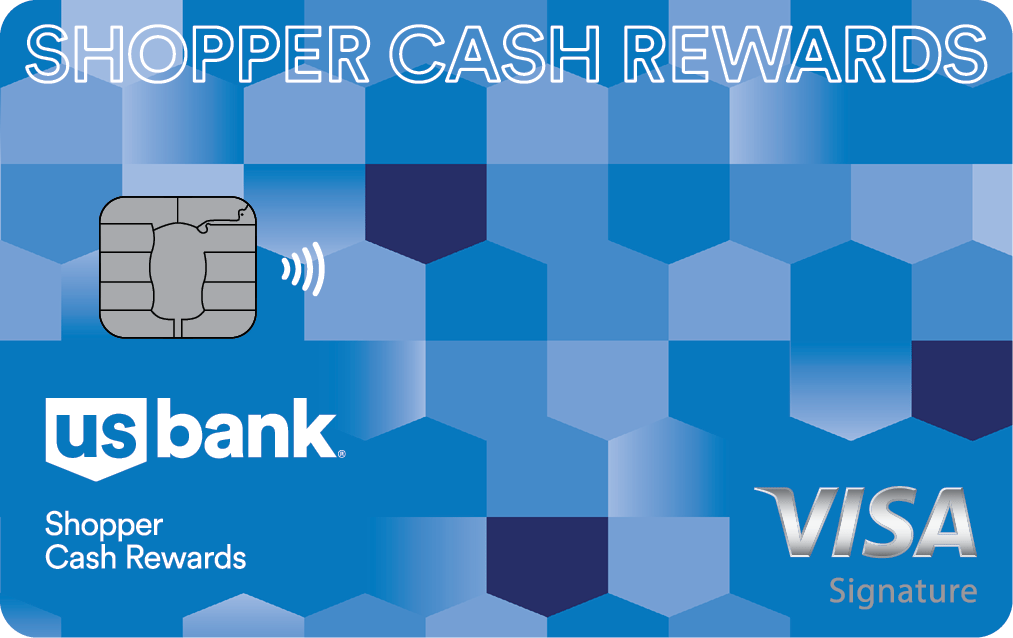
The U.S. Bank Shopper Cash Rewards™ Visa Signature® Card is unique because it allows you to earn cash back at popular merchants at a higher rate compared to using the merchant’s store card. This is a great advantage for those who want to maximize their cash-back rewards. Although the card has an annual fee after the first year, you can easily cover it by spending $1,585 on purchases earning 6% back.
The card offers a $0 intro annual fee for the first year, and after that, it charges $95 annually. As for rewards, you can earn 6% cash back each quarter on combined purchases from two retailers of your choice, up to a limit of $1,500. Additionally, you can earn 5.5% cash back on prepaid car and hotel reservations made through the Rewards Center. For one everyday category of your choice, you can earn 3% cash back each quarter, also up to a limit of $1,500. On all other purchases, you will earn 1.5% cash back.
When you open an account, you can enjoy a welcome bonus of $250 by spending $2,000 on eligible purchases within the first 120 days. However, it’s important to note that there is a 3% foreign transaction fee for each foreign transaction made with the card.
One thing to keep in mind is that you must make three enrollments per quarter to fully benefit from the card’s rewards program. This includes enrolling with your two chosen 6% retailers and one chosen 3% category. Failing to do so will result in earning just 1.5% cash back on your spending.
Amazon Prime Rewards Visa Signature Card
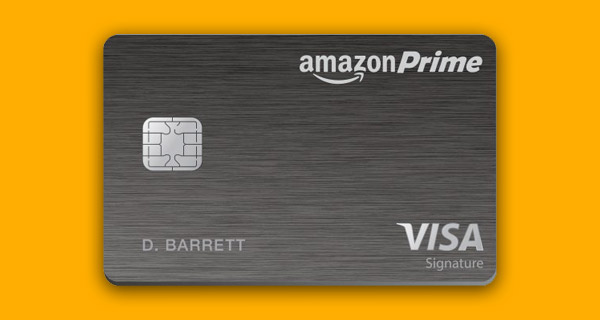
If you’re an Amazon Prime member, you can earn cash back for your purchases. The Amazon Prime Rewards Visa offers this benefit without any annual fee, except for the Prime membership fee.
You won’t have to pay an annual fee if you have a Prime membership. With the Amazon Prime Rewards Visa, you can earn 5% back on Amazon.com, Amazon Fresh, and Whole Foods Market. Additionally, you get 5% back on travel bookings through Chase, 2% back at gas stations, restaurants, and for local transit and commuting, and 1% back on all other purchases.
Upon approval, Prime members receive a $200 Amazon gift card as a welcome bonus. If you have a Prime membership, you won’t be charged any foreign transaction fees. However, it’s worth noting that the $200 welcome bonus may be considered low compared to other cards offering bonuses worth $200 or more.
To be eligible for this card, you must have a Prime membership. While the Amazon Prime Rewards Visa is available, there’s also another credit card issued by Chase for non-Prime members. However, the non-Prime card offers a lower cash-back rate.
Chase Sapphire Preferred® Card
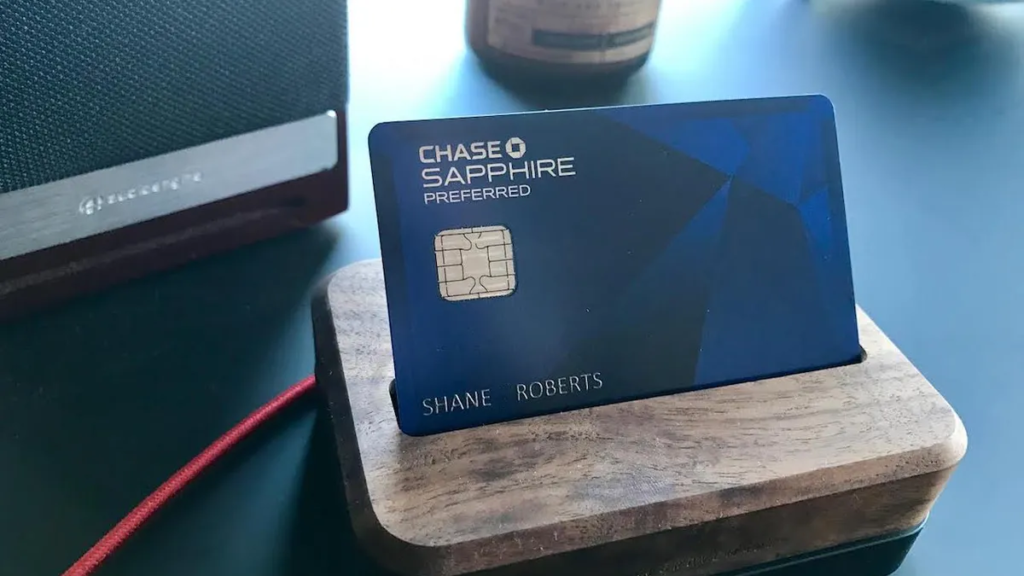
Chase Ultimate Rewards® points are highly valuable for those interested in award travel. However, not everyone wants to pay $550 per year for the Chase Sapphire Reserve®. Enter the Chase Sapphire Preferred® Card. It may seem like a streamlined version of the Reserve, but with a more affordable $95 annual fee. Despite the lower cost, the Preferred still offers substantial value.
The annual fee for the Chase Sapphire Preferred® Card is $95. It provides rewards such as earning 5 points per $1 on travel purchased through Chase Ultimate Rewards®. Additionally, it offers 3 points per $1 on dining, select streaming services, and online grocery purchases (excluding Walmart, Target, and wholesale clubs). For all other travel purchases, you earn 2 points per $1, and for all other purchases, you earn 1 point per $1.
As a welcome bonus, you receive 60,000 points after spending $4,000 on purchases in the first three months of opening the account. Foreign transaction fees are not applicable with this card. There are other benefits and drawbacks to consider. The points can be redeemed for 25% more value towards travel booked through the Chase portal or transferred 1:1 to the same partners as the Sapphire Reserve. The card also provides a $50 annual hotel credit for stays booked via Chase’s portal and offers travel protections like trip cancellation and interruption insurance.
Citi Custom Cash℠ Card
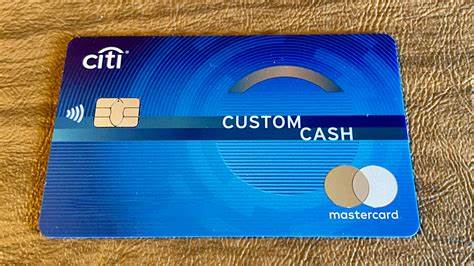
The Citi Custom Cash℠ Card has a unique rewards program. It automatically detects your top spending category each billing cycle and earns 5% cash back on purchases in that category, up to $500 spent per month. All other purchases earn 1% cash back. However, it’s not recommended to use this card for most of your spending.
If you use another card as your daily driver and reserve the Custom Cash for eligible categories, this no-annual-fee card truly shines. There is no annual fee for the Citi Custom Cash Card. Additionally, it offers a welcome bonus of $200 cash back (20,000 ThankYou points) when you spend $1,500 in the first six months of account opening.
When using this card abroad, be aware that there is a 3% foreign transaction fee. On the positive side, the Citi Custom Cash Card provides introductory APR periods for both purchases and balance transfers. Moreover, if you also have the Citi® Double Cash Card, you can combine rewards from both cards into one pool for easier redemptions.
Blue Cash Preferred® Card from American Express
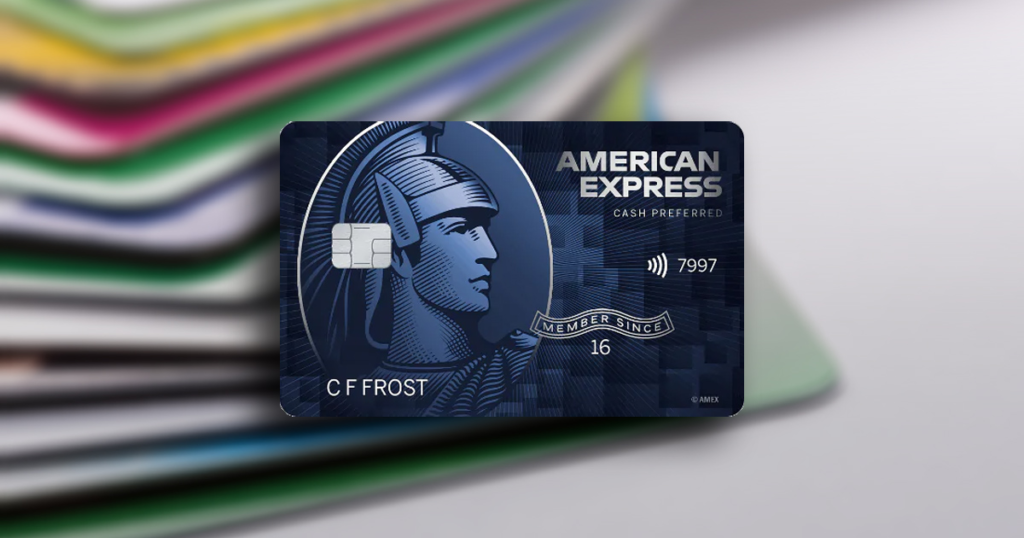
The Citi Custom Cash℠ Card is a credit card that offers various benefits to cardholders. It has a reasonable annual fee. The Blue Cash Preferred® Card from American Express is another option with a similar fee structure.
The Blue Cash Preferred® Card from American Express has a generous cash-back rate of 6% at U.S. supermarkets, but it has an annual spending cap. It also offers 6% cash back on select streaming services. In addition, cardholders can earn 3% cash back at gas stations and on transit.
The annual fee for the Blue Cash Preferred® Card from American Express is $0 for the first year and $95 thereafter. It provides 6% cash back at U.S. supermarkets on up to $6,000 in purchases per year. After reaching the spending cap, the cash back rate is 1%. The card also offers 6% cash back on select U.S. streaming subscriptions.
Furthermore, the Blue Cash Preferred® Card from American Express gives 3% cash back at U.S. gas stations and on transit. For all other purchases, cardholders earn 1% cash back. The cash back is received in the form of Reward Dollars, which can be redeemed as a statement credit.
As a welcome bonus, new cardholders can receive a $250 statement credit after spending $3,000 on purchases within the first six months of card membership.
Costco Anywhere Visa® Card by Citi
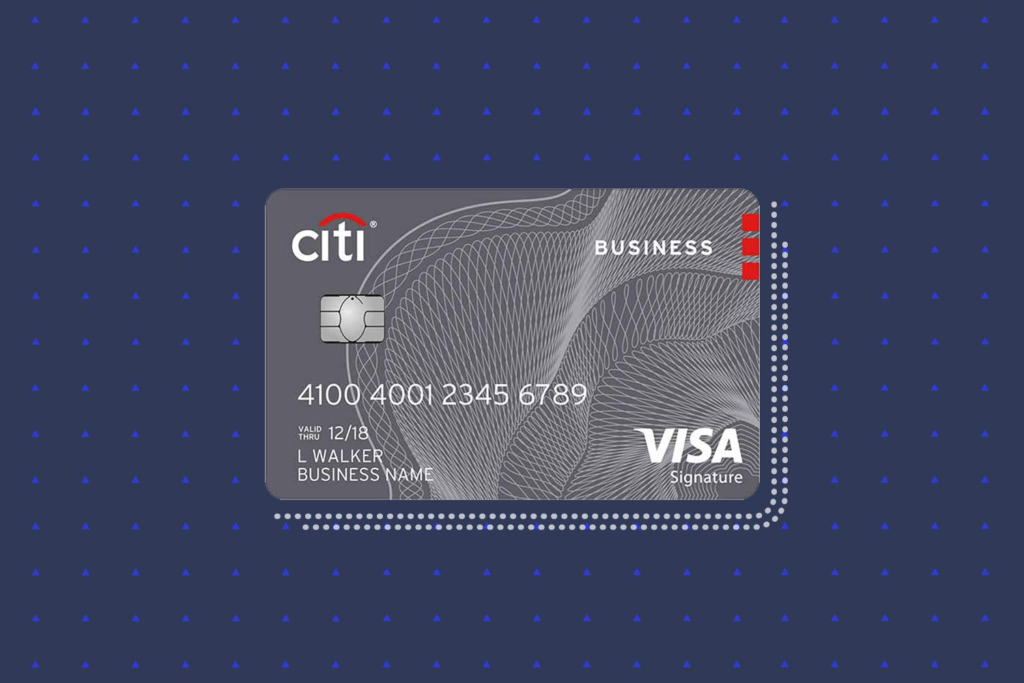
A perfect shopping trip for you might involve a run to Costco for bulk groceries and toiletries. You could also grab one of their famous rotisserie chickens for dinner. On your way home, stop by the gas station to fill up the tank. If this sounds like your ideal trip, consider the Costco Visa from Citi. It could be the rewards credit card that suits your needs.
With the Costco Visa, you can earn 4% cash back on gas and EV charging for the first $7,000 per year. After that, you’ll earn 1% cash back. Additionally, you can get 3% cash back on restaurant and travel purchases, 2% cash back at Costco and Costco.com, and 1% cash back on all other purchases.
To apply for the Costco Visa, you need to have a Costco membership. However, there’s no annual fee for the credit card, apart from the required membership fee.
The Costco Visa doesn’t offer a welcome bonus, and there are no foreign transaction fees. However, it’s important to note that cash back is only disbursed once per year. You’ll receive it after your February billing statement closes, in the form of a reward certificate. This certificate can be redeemed for cash or merchandise at Costco warehouses in the United States.
Should you get a rewards credit card?
There are numerous excellent rewards cards available, making it challenging to choose just one. Cash rewards are always a popular choice due to the universal value of money. It is important not to select a card without a rewards program. Getting something back from the card issuer for using their card is essential, according to John Ulzheimer, a consumer credit expert.
If you treat your credit card like cash and pay the full amount each month, a rewards credit card can help offset your expenses. A suitable cash-back card could earn you anywhere from 1% to 6% back on purchases. Similarly, a travel card can make flights and hotel stays more affordable than you might have imagined.
However, if you typically carry a balance from month to month, a rewards card may not be suitable for you. These cards often have high APRs, resulting in expensive interest charges. The value you receive from the rewards will be negated by the interest payments.
While we do not recommend carrying a balance on your credit card, a card with a lengthy 0% introductory APR period can help reduce the burden of interest charges. These cards are designed for individuals with good-to-excellent credit and offer interest-free periods that can range from as short as six months to as long as 21 months.
What is a rewards credit card?
A credit card is a payment tool made of plastic or metal, representing the money of the issuing bank or credit union. You repay the bank or union at a future date, not your own money being spent.
Certain credit cards offer rewards based on purchases, like cash back percentages (e.g., 2% or 5%). These rewards can be redeemed as cash back. Redeeming rewards might have specific requirements. Some cards demand a minimum redemption amount (e.g., $25), while others allow redemption only in certain increments (e.g., $25).
Remember that all credit cards come with interest charges unless you pay off your charges in full every month or are in a 0% intro APR period. Interest charges can be costly and can negate the value of rewards earned. To maximize credit card rewards, it’s crucial to avoid carrying a balance from month to month. Instead, pay off the balance in full each month to avoid incurring interest charges.
What types of rewards can you earn with a credit card?
Rewards credit cards offer various benefits, such as cash back, points, or miles. The specific terminology for these rewards is not as crucial as the redemption options provided by the card issuer.
One common redemption method is converting credit card rewards into a statement credit, which reduces your outstanding balance. However, it’s important to note that this doesn’t fulfill your minimum monthly payment requirement.
Certain issuers allow you to redeem rewards as cash back, which can be deposited directly into your bank account. Another popular option is exchanging rewards for gift cards from a wide range of retailers. When using airline credit cards, you can use your rewards to book flights or upgrade your existing ones. Typically, these rewards are applicable not only to the airline issuing the card but also to its alliance partners.
The best travel rewards credit cards go a step further by enabling you to transfer your rewards to airline and hotel loyalty programs. This is especially appealing to individuals who value maximizing their rewards potential and frequently travel. By diversifying redemption methods and taking advantage of partnerships, credit card users can optimize their rewards and enjoy greater value for their loyalty.
How much are credit card rewards worth?
The redemption value of credit card points can vary depending on the card and chosen method. It’s important to aim for a value of at least 1 cent per point when redeeming them.
Let’s take Chase Ultimate Rewards as an example. When you redeem these points for cash back, each point is worth 1 cent. However, with the Chase Sapphire Reserve card, you can get 50% more value per point when booking travel through the Ultimate Rewards portal, totaling 1.5 cents per point.
How do you pick the best rewards credit card?
When choosing a rewards card, there are two important factors to consider. Firstly, analyze your spending patterns and identify the categories where you spend the most. If you rarely drive, a card that rewards gas station expenses wouldn’t be beneficial. Similarly, if you don’t dine out frequently, a dining rewards card wouldn’t be suitable.
Secondly, determine how you intend to utilize your rewards. If you’re interested in transferring points and finding the best deals for award travel through various airline and hotel loyalty programs, cards like Chase Sapphire Preferred or Bilt Card might be suitable.
However, if you prefer receiving cash directly into your checking account, a cash-back card like Citi Custom Cash would better align with your lifestyle and financial requirements.
